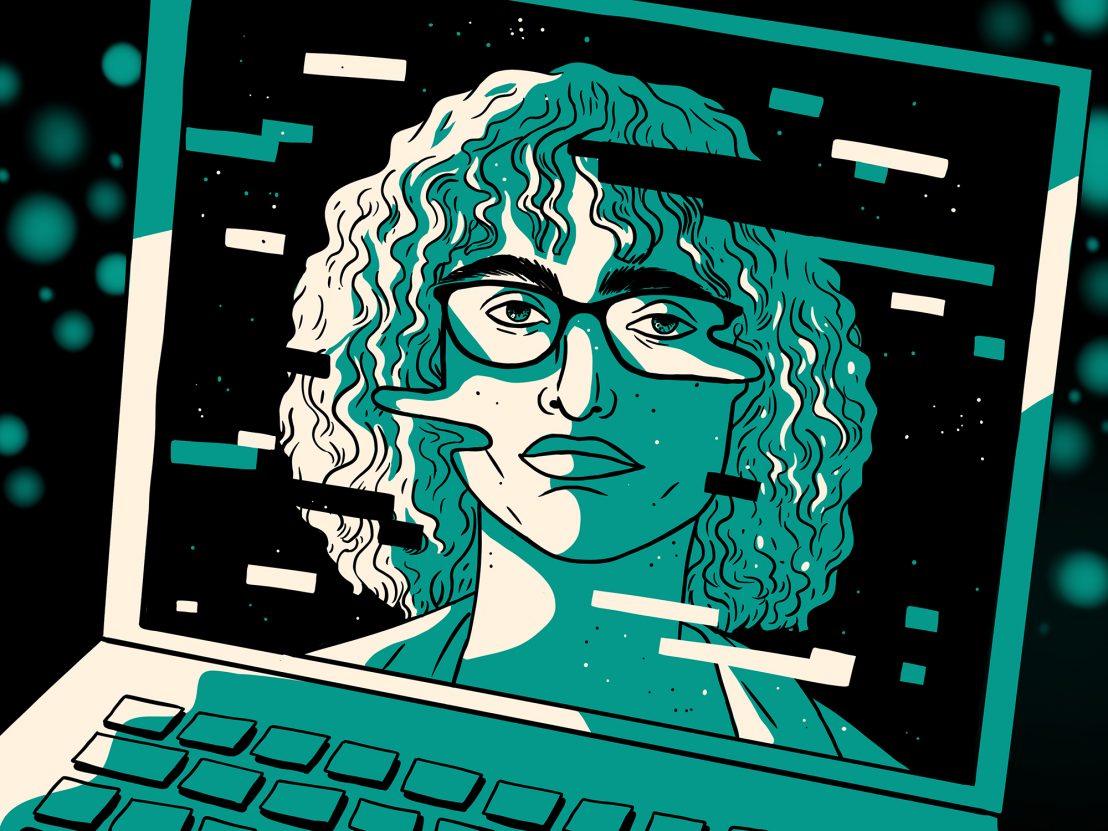
The We’re All Going to the World’s Fair director reflects on the importance of allowing trans filmmakers to tell their own stories.
After premiering at Sundance and screening at virtual fests throughout 2021, the internet-set experimental coming-of-age/horror drama We’re All Going to the World’s Fair has begun its larger rollout. In their feature debut, director Jane Schoenbrun filters their personal history online and aspirations for trans cinematic language into a film capturing the idiosyncrasies of virtual connection and feeling disconnected from oneself.
LWLies: Can you talk about your experiences online as a teenager that you were drawing from in making World’s Fair?
Schoenbrun: I was of that generation where the computer entered the home and slowly became more and more of a magnet – especially for me as a queer creative kid. It was a space that was really important for me, because it was hard to be both of those things where I was growing up – it was viewed as dark or strange or dangerous or wrong. I would wait for everyone to go to bed and stay up on the computer, writing and reading fan fiction, lurking on message boards and AIMing with people from school and weirdos I met online. It was something I never acknowledged or talked about in my ‘real life’. That’s the dominant experience I was drawing from emotionally and trying to explore with the film.
I was drawn to darker tones – horror movies and sad music and The X-Files were inviting for me as a kid. I wasn’t finding a gaze that felt beautiful or exciting to me in the daylight. I have this vivid memory of fourth grade: they told us to bring in a book that we loved and I brought in a novelisation of an episode of The X-Files. This ‘future football player’ kind of kid asked me what book I brought. I just remember seeing his face drop and him saying, ‘Oh, you’re into that kind of thing.’ The memories we hold onto from that age are all about things we don’t understand yet that are very fundamental, and that’s a queer memory to me. And [World’s Fair] is a queer film for a similar reason.
Since the internet is far different now than it was in our adolescence, how did you tailor your experiences in making a contemporary internet film?
I made a decision early on that I wasn’t so interested in realism. People sometimes get frustrated with the film for not giving you a year that it’s taking place, and I think that goes for the different aesthetics we see. It’s drawing as much from the dial-up wild west haunted landscape that was my childhood online as it is from 2012-era creepypasta amateur YouTube aesthetics. Maybe a little less from the contemporary internet. It just felt limiting to choose an internet to stay in. That had everything to do with how personal the film is and how much it’s about reflecting on these different generations that had a similar experience to mine as a queer person finding themselves in the light of that screen.
How did you develop Casey as a character based on your own experiences, and how much did Anna Cobb bring to it?
I wanted to find a collaborator to build that character with, rather than putting it all on the page and trying to fit a human being into this preconceived notion of that character. Much of the film is riding on Anna’s shoulders, as somebody who is all we’re looking at for most of the film. You needed somebody incredibly talented, who felt very alive and very real – in that way of stumbling across somebody online and being fascinated by who this person is when the camera shuts off… something haunted.
In Anna, I found somebody who was overflowing with personality and charisma. She’s so engaging and smart. The other thing that Anna has is an incredible craft and work ethic that I think is borderline unhealthy for someone her age – she takes her work so seriously. So I wrote [Casey] 70 per cent of the way there, and then the last 30 per cent was tailoring the character to Anna and letting Anna seep into it. And Anna is very different from Casey – Anna is very goofy, doesn’t like computers, doesn’t like horror movies. But she put so much of herself into it and found a way to get in the headspace of that character. And in that space, she tapped into this loneliness and anger, and all of that is what makes the character sing.
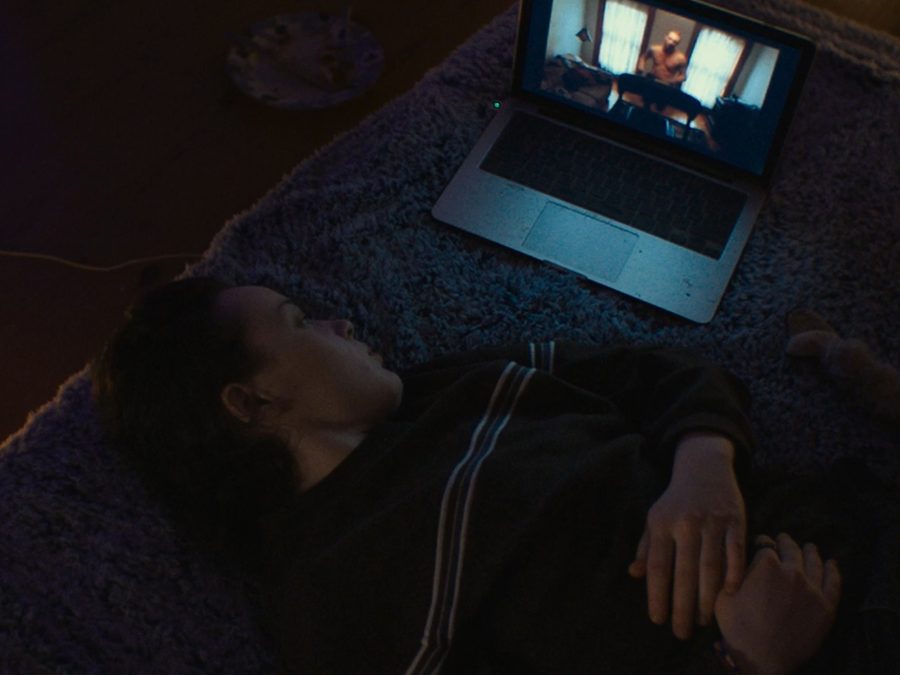
What did capturing the perspective of JLB [Michael J Rogers] alongside Casey’s bring to the film for you?
One of the core things I wanted to say about the internet is how ephemeral and transient it can feel. Structurally, I wanted the film to feel like traveling from one bedroom to another, and in between we’re sort of lost in the haze of the internet – feeling very far away and distant from the warmth of the start of the film. It would do a disservice to over-explain, [but] I think it has a lot to do with dysphoria and transness and loneliness. It also has a lot to do with this idea that the internet disappears – videos come down, people disappear. Maybe you know someone’s first name, but it becomes impossible to track people down, especially if they’re not telling you details about their lives, which Casey very intentionally is not.
Like Casey says in her last line, ‘One day soon, I’m just going to disappear and you’re not going to have any idea what happened to me.’ She says it like a threat, and that threat is real. It has a lot to do with the ways we try to know people but can’t ever quite know what’s going on in somebody else’s head. The way I’m talking about online experience and performativity in this parasocial space is a metaphor for that – the ephemerality of human connection.
Much of World’s Fair experiments with its visual style alongside the technology being used. What significance did embracing the cinematic language of this technology hold for you?
I was really engaged with this as someone who came up in a microbudget filmmaking scene under a film culture that, even in its ‘independent’ spaces, is deeply entrenched in commercial realities, capitalist pursuits, and moneymaking – and, as a result, is deeply conservative and at risk of feeling like a zombie. It’s rare that I see something that feels wholly new and exciting and not trying to fit into a monocultural commercial landscape. Where I was seeing creative work being made was in the short form, whether by radical microbudget filmmakers or by kids on the internet.
If you immerse yourself in that work, you can see patterns and aesthetics and cultural obsessions that feel new and fresh. They’re picking at something that is very contemporary and that hasn’t been explored in a realistic way in film [without being] watered down into a more traditional, commercial form – bleeding something of its power to fit into the structures of IP.
In constructing my film, it lulls you into a set of expectations about what kind of film you’re watching, in the same way that Casey’s videos lull you into an expectation of what she wants you to think and feel. Then the legs get kicked out from under the film in many ways, one of which is the camera and the aesthetics and perspective and “production quality” or “amateur nature” of the film. Maybe most significantly, though, is who our narrator is – there’s this increasingly complicated conversation about whose camera we’re following as the film goes on.
When you make a film, you’re spending a lot of your time and social capital and emotional health to get 80 minutes of something that hopefully feels exciting to you. If I was going to bite that off with the minimal resources I had at my disposal, it needed to be something that felt big to me creatively. It couldn’t be big budget-wise, so it had to be something where I would go into this swinging with ambition.
As a trans viewer, how the film subtextually presents transness and dysphoria is especially exciting for me. How did you strike a balance between making a film rooted in transness and capturing the internal nuances specific to trans people’s lives?
The answer is pretty simple: I was trans and made a movie. This movie walks hand-in-hand with my own transition. When I started working on the film, my egg hadn’t cracked yet; I would have said no to the question “Are you trans?” And yet, I was trying to unpack a feeling that I would later come to call dysphoria.
By the time I got there, I tried to stay true to the artistic practice of not signifying anything, and that was really scary. Instead, I focused on coming from a real emotional space and this need to express a feeling that I was working through. [I was] unpacking stuff from my teenage years, but also unpacking the process of figuring out my transness and understanding gender and identity in a deeper way than I had previously. That all went straight into the film without over-explaining it or making it safe. It wasn’t until the film premiered at Sundance and I saw that it did resonate with other trans people that I let myself exhale from this years-long process of making something that I wasn’t underlining.
One of the things that you’re struggling with most early in transition – the first thing I tell people when they come out to me as trans – is that it’s real. That imposter syndrome that doesn’t get talked about because our enemies try to use it against us is a real part of early transition. Seeing these things that I always thought were just me being a weirdo or me never being able to figure out why I was different from everybody else [in] other kids out there dealing with similar desires, gazes, and struggles as I had was one of the most validating things in my life.
In your director’s statement, you say we’re still finding ways to articulate what it’s like to be trans and feel dysphoria in film. What do you hope to see from your trans peers in further exploring that?
Again, it’s a fairly simple answer: trans people being given the opportunities to make personal and difficult work that’s legible to them, even if it’s not legible to cis gatekeepers. A big part of what I do is take meetings to try to get new films made, and I’m rarely – if ever – across the table from a trans person. I don’t think there are any trans people in real positions of power across the industry. Or if there are, they’re still in the closet and maybe always will be, because unfortunately it’s an age thing. I speak in college classes and there’s always two or three non-binary kids in there talking from personal experience about why [World’s Fair] resonates, and I think that’s generational.
If I’m standing on a soapbox talking about trans shit and what we need to do to redefine it, it’s because there aren’t many other people of my age group out there doing that. I’m a little further into my life right now, and I’m getting opportunities to do things that are big and hopefully will make a difference for this ongoing conversation. But really, my hope in five years is that there will be trans films everywhere. I have peers who I adore and look up to who are doing great work in the space. But it’s so nascent. Even a couple years ago, it was not existent at all. It just needs to keep growing. Autonomy, trans final cut: that’s what needs to happen.
Published 25 Apr 2022
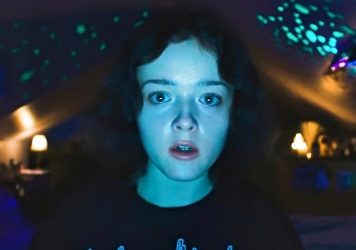
A teenage girl gets caught up in a mysterious online game in Jane Schoenbrun's fascinating tech-horror debut.
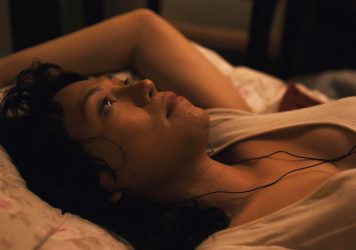
By Ryan Coleman
Isabel Sandoval’s third feature, Lingua Franca, gives a voice to some of the world’s most vilified and vulnerable people.
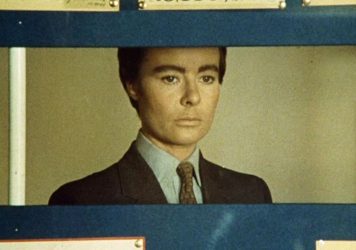
Findings from a rare public screening of John Dexter’s I Want What I Want.